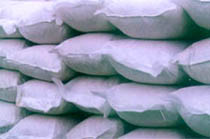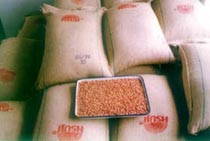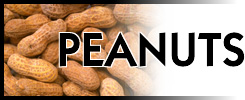|
|
|
| After proper curing, harvested peanuts (which have not been shelled, cleaned or crushed)will be simply selected and graded by farmers into 2 classifications for commercial sales:shelled peanut |
|
 |
Raw materials are always sampled and inspected by our laboratory staff in the buying stations on size, moisture, admixture and mainly on aflatoxin to determine the overall quality and on-farm value before entering our plant. On processing, in-shell peanuts are taken from the storage and cleaned, dirt, rocks, bits of vines, and other debris are removed, then they are separated into size categories of 7/9,8/10, 9/11,11/13 etc...by screens. Stems dark or damaged pods, light-weight, and very immature pods are removed again through HPS ( hand-picks and selected ) so that only the most mature, and brightest pods remain. In shell peanuts are usually produced from the large Virginia type or Ji You 4 type that have been grown in light colored soil. |
| |
| Peanuts to be shelled move on to the shelling process, where they are first cleaned; stones, soil, and other foreign material are removed. The cleaned peanuts move by conveyor belt through shelling machines in which the peanuts are forced through perforated grates which separate the kernels from the hulls. Shakers separate the kernels and the pods. The kernels are then passed over the various screens where they are sorted by size . The shelled peanuts ( peanut kernels ) are cleaned again to remove foreign materials and genuinely HPS (hand-picks and selected) to ensure whole-kernels from damage and free of admixture for market. |

|
| From the sheller, peanut kernels are cleaned again and "blanched" before they are used in most peanut foods. Blanching is simply the removal of the reddish skin covering the peanut kernels. In whole-nut or split-nut dry blanching, the kernels travel through warm air for a period of time to loosen the skins. Then the kernels go through a blanching machine where large rollers rub the surfaces of the kernels until the skins fall off. Blanched peanuts are then checked with electronic color sorters to ensure that blanching is complete. |
|
|



